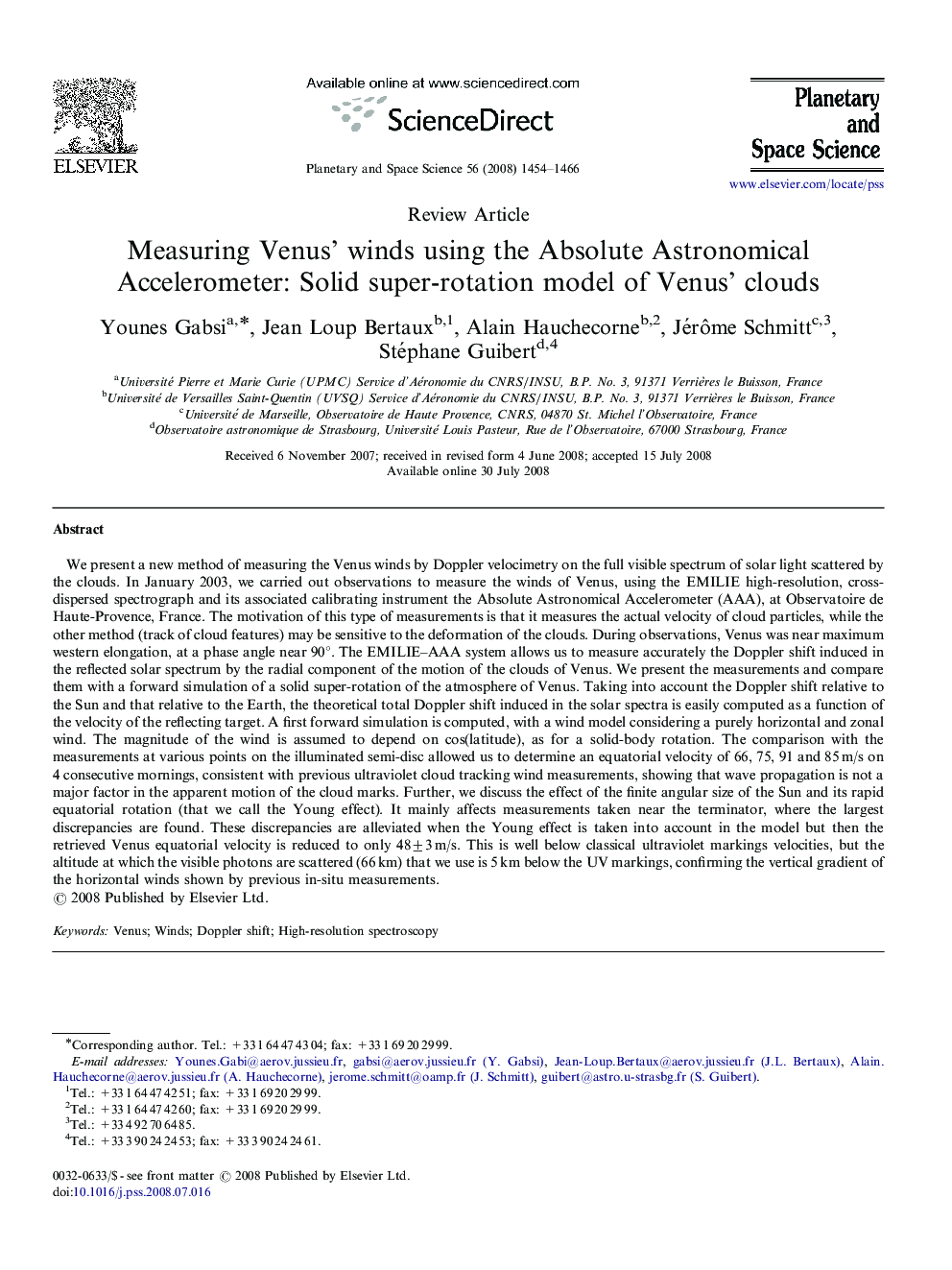| کد مقاله | کد نشریه | سال انتشار | مقاله انگلیسی | نسخه تمام متن |
|---|---|---|---|---|
| 1782240 | 1022327 | 2008 | 13 صفحه PDF | دانلود رایگان |

We present a new method of measuring the Venus winds by Doppler velocimetry on the full visible spectrum of solar light scattered by the clouds. In January 2003, we carried out observations to measure the winds of Venus, using the EMILIE high-resolution, cross-dispersed spectrograph and its associated calibrating instrument the Absolute Astronomical Accelerometer (AAA), at Observatoire de Haute-Provence, France. The motivation of this type of measurements is that it measures the actual velocity of cloud particles, while the other method (track of cloud features) may be sensitive to the deformation of the clouds. During observations, Venus was near maximum western elongation, at a phase angle near 90°. The EMILIE–AAA system allows us to measure accurately the Doppler shift induced in the reflected solar spectrum by the radial component of the motion of the clouds of Venus. We present the measurements and compare them with a forward simulation of a solid super-rotation of the atmosphere of Venus. Taking into account the Doppler shift relative to the Sun and that relative to the Earth, the theoretical total Doppler shift induced in the solar spectra is easily computed as a function of the velocity of the reflecting target. A first forward simulation is computed, with a wind model considering a purely horizontal and zonal wind. The magnitude of the wind is assumed to depend on cos(latitude), as for a solid-body rotation. The comparison with the measurements at various points on the illuminated semi-disc allowed us to determine an equatorial velocity of 66, 75, 91 and 85 m/s on 4 consecutive mornings, consistent with previous ultraviolet cloud tracking wind measurements, showing that wave propagation is not a major factor in the apparent motion of the cloud marks. Further, we discuss the effect of the finite angular size of the Sun and its rapid equatorial rotation (that we call the Young effect). It mainly affects measurements taken near the terminator, where the largest discrepancies are found. These discrepancies are alleviated when the Young effect is taken into account in the model but then the retrieved Venus equatorial velocity is reduced to only 48±3 m/s. This is well below classical ultraviolet markings velocities, but the altitude at which the visible photons are scattered (66 km) that we use is 5 km below the UV markings, confirming the vertical gradient of the horizontal winds shown by previous in-situ measurements.
Journal: Planetary and Space Science - Volume 56, Issue 11, October 2008, Pages 1454–1466